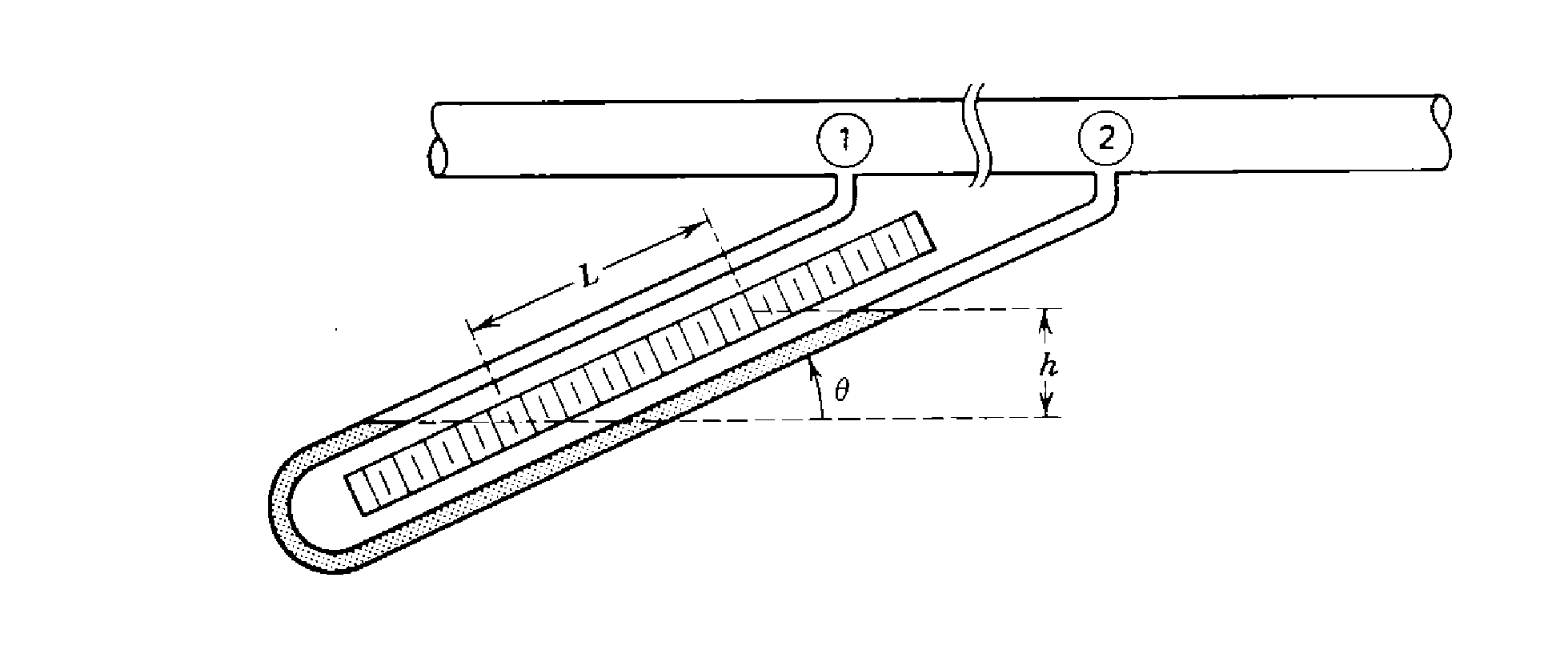Practice Mini-Exam 1
CM310 Fall 1998
September 14, 1998
(SOLUTION)
-
(50 points) A gas containing equal parts (on a molar basis) of H2,
N2, and H20 is passed through a column of calcium
chloride pellets, which absorb 97% of the water and none of the other gases.
The column packing was initially dry and had a mass of 2.00 kg. Following
6 hours of continuous operation, the pellets are reweighed and are found
to have a mass of 2.21 kg. Calculate the molar flow rate (mol/h) of the
feed gas and the mole fraction of water vapor in the product gas.
-
(50 points) An inclined manometer (shown below) is a useful device for
measuring small pressure differences. The principles used for deriving
manometer equations remain valid for this arrangement. The difference between
the inclined and the vertical manometer is that while h would be
small and difficult to read for a small pressure drop if the manometer
were vertical, L can be made quite large for the same pressure drop
by making the angle of inclination, q, small.
-
Derive a formula for h in terms of L and q.
-
Suppose the manometer fluid is mercury, the process fluid is a gas, the
inclination of the manometer is q=15o,
and a reading of L=8.7 cm is obtained. What is the pressure difference
between points 1 and 2?


